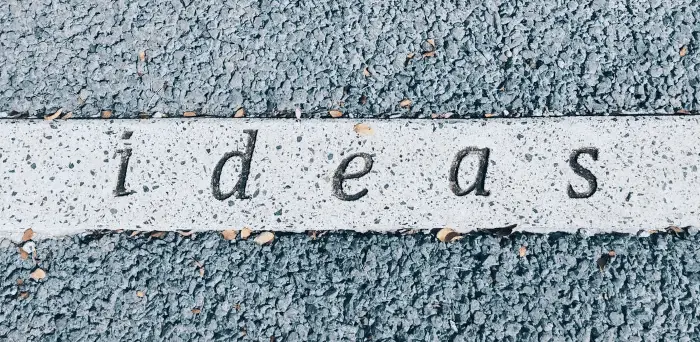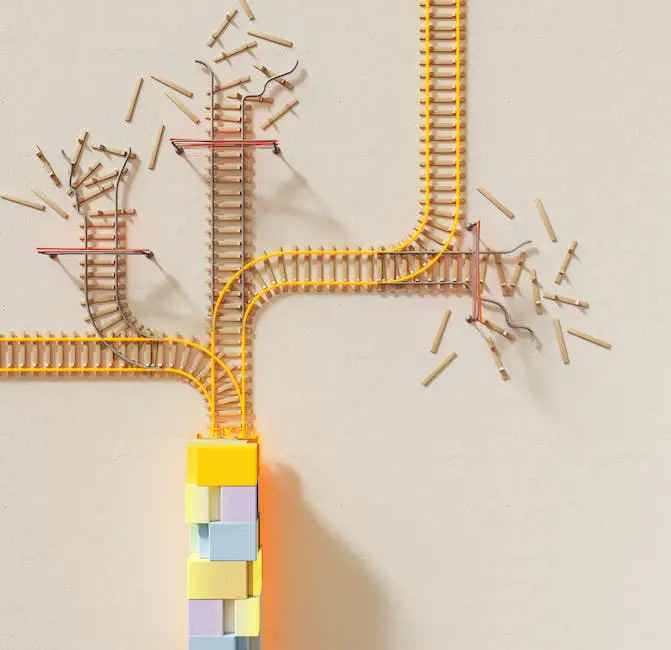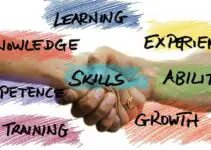In higher education and advanced education exemplified by graduate school education, demonstrating critical thinking skills is crucial to good scholarship. But what really is critical thinking? How is it demonstrated and how can professors measure such level of thinking?
In this article, I clarify critical thinking by exploring its definition, importance, components, and ways to develop this skill, among other things. This discussion considers the context of the world that gradually undergoes significant change due to artificial intelligence that gradually creep into our lives. We need to be discerning of what information is presented to us given the preponderance of erroneous information, misinformation, or simply the infodemic we face every day.
In general, how can we employ critical thinking to discern fact from fiction? How can we avoid being misled? Again, I highlight the important points in this discussion.
Let’s see our tool to survive the age of misinformation and disinformation.
Table of Contents
Introduction
In a fast-paced world where information and data flood our daily lives, it is increasingly essential to navigate with discernment, clarity, and analytical acumen in both personal and professional spheres. This necessity is where the profound relevance of critical thinking becomes clear.
Encompassing components like analysis, interpretation, and self-regulation, critical thinking is a cognitive process that enriches decision-making, problem-solving, and quality management across varied sectors.
This discussion will delve into what critical thinking entails, why it holds utmost significance in today’s world, the integral skills and dispositions it comprises, and how it can be effectively developed and measured.
Defining Critical Thinking
Critical Thinking Defined
Critical thinking refers to the ability to analyze information objectively and make a reasoned judgment. It involves the evaluation of sources, such as data, facts, observable phenomenon, and research findings.
Critical thinking refers to the ability to analyze information objectively and make a reasoned judgment. It involves the evaluation of sources, such as data, facts, observable phenomenon, and research findings.
Critical thinkers can separate facts from opinions, evaluate credibility, identify prejudice or bias, distinguish between relevant and irrelevant information, and ascertain the validity of the information. This involves clear, rational, open-minded, and informed thinking.
So, what is critical thinking exactly? It’s the capability to think in a clear and rational manner about what actions to take or beliefs to hold. It includes the ability to independently engage in reflective thinking.
A critical thinker is able to discern the logical connections between ideas, construct and evaluate arguments, detect inconsistencies and common mistakes in reasoning, solve problems systematically, recognize the relevance and significance of ideas, and reflect on the justification of their own beliefs and values.
The Critical Thinking Mindset
Beyond the very technical aspects, critical thinking fundamentally involves a mental discipline that calls for reflective mindfulness, a sense of skepticism, and intellectual humility. Balancing these qualities with curiosity, creativity, and an appreciation for complexity, this mindset becomes pivotal within the decision-making process.
Essentially, the adoption of a critical thinking mindset allows for a robust evaluation of different possibilities. This process is based on established criteria and standards that enable clear, rationale thought, thus unlocking more informed, evidence-based decision making.
The Importance of Critical Thinking
Critical thinking plays a crucial role in professional environments. It is integral in problem-solving and decision-making processes, enabling professionals to analyze issue-related data, consider alternate perspectives, and make informed decisions based on sound reasoning and evidence.
Within academic settings, critical thinking is vital for understanding and interpreting complex theories or concepts. It fosters independent thinking, encourages intellectual curiosity, and prepares students to navigate the complexities of real-world scenarios, by enabling them to assess the value or validity of claims and arguments presented to them.

Critical thinking is often assessed through various assignments, presentations, class discussions, and project-based activities. The purpose of these tasks is not only to measure a student’s ability to process and synthesize information but also their ability to draw connections between different concepts and build up well-reasoned arguments.
In science, for example, critical thinking helps researchers design experiments, interpret data, and derive conclusions. In business, critical thinking assists organizations in strategic planning, problem-solving, decision-making, and innovation. In education, critical thinking is crucial in developing skills in reading, writing, and learning.
In personal decision-making, critical thinking can significantly improve the quality of life. It aids in making sound financial decisions, solving day-to-day problems effectively, and choosing the most optimal course of action in various situations.
Furthermore, critical thinking can foster creativity by necessitating the exploration of multiple viewpoints and solutions, it can enhance communication by promoting clarity, accuracy, and relevance in the exchange of ideas, and promote social harmony by encouraging open and objective discussions.
Critical thinking is a vital skill in today’s world, as it allows individuals to process information more effectively and make well-informed decisions. Rather than merely accepting information as presented, a critical thinker will question, analyze, and often challenge that information. This process helps to avoid faulty reasoning, cognitive biases, and manipulation.
6 Components of Critical Thinking
Critical thinking includes specific components such as analysis, interpretation, inference, explanation, and self-regulation.
1. Analysis
This involves examining information in detail in order to understand it better and to draw conclusions. It could be data, a concept, or a process.
Analysis is a key component of critical thinking. It involves breaking down complex problems or arguments into parts to better understand their nature and relationship.
This can include questioning assumptions, recognizing patterns, identifying underlying causes, and pursuing relevant evidence. For example, in a heated political debate, a critical thinker might analyze the validity of each party’s claims, their supporting facts, and the implications of their proposals.
2. Interpretation
This is the act of explaining the meaning of information. Critical thinkers deeply focus on a topic or issue, questioning and analyzing it from multiple perspectives.
Interpretation refers to the ability to understand and express the meaning or significance of a wide variety of experiences, situations, data, events, judgments, conventions, and criteria. It also involves making inferences — drawing out unseen implications from the information given.
For instance, someone using interpretation during a political debate will not only understand what the speakers say but draw insights about their political ideologies, plans, or biases.
3. Inference
It is the act of deriving logical conclusions from premises known or assumed to be true. Inferences can be accurate or inaccurate, logical or illogical, justified or unjustified.
4. Explanation
Here, the critical thinker tries to make something clear or easy to understand with detailed and observable facts. They clarify the cause-and-effect relationships surrounding an event or situation.
5. Evaluation
Evaluation in critical thinking refers to the process of determining the credibility and relevance of the information. This involves assessing the evidence supporting a claim, determining its source’s reliability, and judging the logical consistency of arguments.
Returning to the political debate example, evaluating might involve checking the sources of factual claims or judging whether the proposed solutions are feasible given the present socio-political conditions.
6. Self-Regulation
This is the process where the thinker examines his or her own cognitive processes to make decisions about how to think and draw conclusions. This skill ensures that the thinking process is effective, efficient, and yields the intended results.
Dispositional Elements of Critical Thinking
Dispositional elements refer to the attitudes or mindsets conducive to critical thinking. These include open-mindedness, intellectual humility, skepticism, and intellectual courage.
Open-mindedness
Open-mindedness involves being receptive to new ideas or conflicting perspectives. It implies the willingness to revise pre-existing beliefs based on new evidence or understandings. This characteristic helps critical thinkers avoid biases, consider all available evidence, and make fair judgments.
Intellectual Humility
Intellectual humility refers to recognizing that one’s own knowledge has limits. This disposition helps establish an unbiased view and a continuing interest in acquiring new knowledge.
Skepticism
Being skeptical involves questioning the authenticity and credibility of the information rather than accepting it at face value. Skeptics seek to validate information through evidence, logic, and rational arguments.
Intellectual Courage
Intellectual courage refers to the willingness to evaluate all ideas and beliefs, even those that conflict with one’s own. Challenging comfortable assumptions in pursuit of truth is essential for critical thinking.
How to Develop Critical Thinking Skills
1. Pursue Continuous Learning
To hone your critical thinking skills, continuous learning is of paramount importance. This includes opening oneself up to an array of experiences and environments, entertaining diverse viewpoints and actively seeking opportunities to challenge your pre-existing beliefs.
As mentioned in the previous discussion, open-mindedness is an element of critical thinking. It’s not too late to learn something new. Old dogs can learn new tricks with perseverance. You are not too old to learn how to use Moodle in your online classes.
Anyone who stops learning is old, whether at twenty or eighty. Anyone who keeps learning stays young.
– Henry Ford

2. Challenge the Status Quo
Being a critical thinker also involves questioning the accepted norms and challenging the traditional wisdom. Instead of simply accepting things as they are, delve deeper to understand the reasons behind their existence.
3. Understand Diverse Perspectives
The essence of critical thinking lies in viewing situations from various perspectives. This requires understanding others’ viewpoints, even if they are contradictory to your personal beliefs. This varied understanding can help you make more informed decisions.
4. Embrace Calculated Risks
Developing your critical thinking skills may entail taking calculated risks. This includes stepping out of your comfort zone to experience new things and ideas that might challenge your previous assumptions. This involves a careful analysis of the pros and cons before making an informed decision based on your findings.
5. Promote Open-Mindedness
Critical thinkers are often open-minded individuals. They are open to new ideas and different perspectives. Developing this trait involves embracing diversity, understanding others’ experiences, and actively participating in challenging conversations.
6. Keep a Reflective Journal
Maintaining a reflective journal helps you document your thought process over time. You can analyze your experiences, thoughts, and decisions made. Writing down your thoughts offers a chance to critically analyze your actions, understand why you made certain decisions, and thereby foster self-awareness and critical thinking.
Measuring Critical Thinking
Critical thinking can fundamentally be described as one’s aptitude to assess, conceptualize, apply, and critically examine information gathered or produced through various means, such as observation, dialogue, reflection, or reasoning. This intellectual process encourages making well-reasoned judgments based on solid evidence and logic rather than accepting arguments and conclusions at face value.
How we measure critical thinking, however, can vary. While these capabilities may sound subjective, there are objective ways on how to measure critical thinking. I enumerate some of them in the next section.
1. Standardized Tests to Measure Critical Thinking
Typically, standardized testing is utilized to gauge a person’s critical thinking competence. Such tests, like the Watson-Glaser Critical Thinking Appraisal or the Cornell Critical Thinking Test, evaluate areas such as inference, recognition of assumptions, interpretation, deduction, and evaluation of arguments.
The Ennis-Weir Critical Thinking Essay Test measures the ability of students to reason through a problem and to express their reasoning in writing. This type of measurement tool is used mainly in educational settings, but it offers valuable insight into individual critical thinking skills.
2. Performance Assessments
Beyond standard testing, another metric involves practical performance assessments. These involve the observation of how an individual tackles a complex problem.
Specific critical thinking aspects might be identified and evaluated using rubrics – criteria set to ascertain a person’s ability to identify, summarize, and offer solutions to problems while also taking various perspectives into account.
3. Self and Peer Evaluations
In addition to the aforementioned, self and peer evaluations provide another measure of critical thinking. These require individuals to introspect on their cognitive processes or inspect the same in their peers.
Interpreting The Results
Interpretation of these tests depends largely on the benchmarks set by the individual administering the exam. As a rule, the results of such evaluations should always be interpreted in the context of all available data from the assessment of the individual’s cognitive abilities and academic skills.
Overall, the measurement of critical thinking provides invaluable insight into one’s ability to reason, make judgments, solve problems, and make decisions. These abilities are of immense importance in both personal and professional realms.

Key Takeaways
As we stand in an era of information overload, the value of critical thinking in deciphering truth from noise cannot be overstated. It enhances our ability to analyze, interpret, evaluate, and take calculated risks in various facets of life, ensuring we make informed, intelligent decisions.
Furthermore, it fosters a culture of curiosity, open-mindedness, and intellectual courage, promoting better communication and fostering social harmony.
As effortlessly as it might seem to come for some, critical thinking, like any other skill, can be cultivated and honed over time with dedication and the right strategies. These skills can be measured with tools like the Watson-Glaser Critical Thinking Appraisal, leading to a more informed understanding of an individual’s critical thinking capabilities.
Therefore, investing in the development and assessment of critical thinking skills is an investment in a more discerning, informed, and intellectual society.
In conclusion, critical thinking is not only a valuable but a crucial life skill. In today’s information-rich world, the ability to analyze data and make swift, efficient decisions is vital. Thus, understanding critical thinking and its significance, and knowing how it is measured and can be improved, is key to personal and professional growth.



